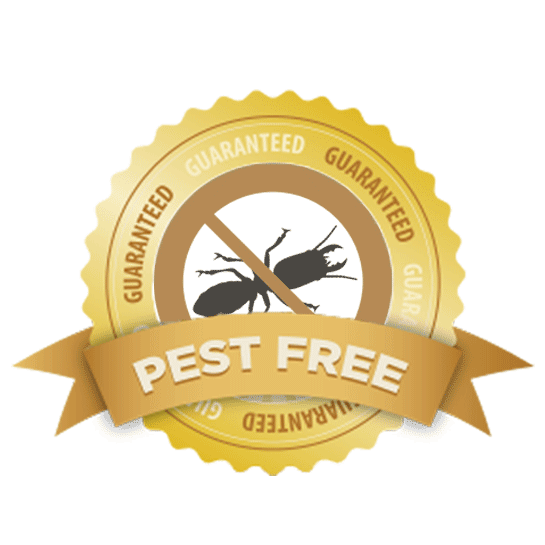Relied On A1 Exterminator Charlotte NC - Comprehensive Pest Solutions
Relied On A1 Exterminator Charlotte NC - Comprehensive Pest Solutions
Blog Article
Bed Insect Therapy Malfunction: Contrasting Chemical Vs. Non-Chemical Solutions
In the realm of pest control, specifically when managing the persistent concern of bed bugs, the selection between chemical and non-chemical therapy services can be a pivotal one. Both methods supply distinctive benefits and downsides, influencing variables such as effectiveness, security considerations, and overall cost. By taking a look at the nuanced details of each approach, a clearer understanding of which course to pursue in dealing with a bed pest problem can be achieved.
Effectiveness of Chemical Therapies
Chemical therapies for bed insect problems have actually been commonly acknowledged for their rapid and potent effectiveness in removing these parasites. When taking into consideration the effectiveness of chemical treatments, it is critical to understand that they can supply a quick and comprehensive solution to a bed pest issue.
Furthermore, chemical therapies have the benefit of offering recurring results, suggesting that they can remain to get rid of bed bugs also after the initial application. This residual action is specifically beneficial in combating any type of potential re-infestations. Furthermore, the fast activity of chemical treatments can bring alleviation to people dealing with severe bed insect infestations, permitting them to reclaim control of their home rapidly.
Security Interest In Chemical Solutions
One vital element that requires cautious consideration when making use of chemical options for bed insect treatment is guaranteeing the safety of owners and the setting. Direct exposure to specific chemicals used in bed bug therapies can lead to breathing issues, skin irritability, or various other unfavorable reactions, especially in people with pre-existing conditions or level of sensitivities.
Additionally, the ecological impact of chemical remedies is one more substantial consideration. Some chemicals utilized in bed pest treatments might be harmful to advantageous pests, wildlife, and ecosystems if they leach into the dirt or water systems. It is crucial to utilize chemical therapies carefully, following safety guidelines, and taking into consideration much less poisonous options to minimize these risks and guarantee the effective and safe administration of bed pest invasions.
Benefits of Non-Chemical Methods
Thinking about the potential safety and security worries and environmental impact associated with chemical solutions for bed pest therapy, checking out non-chemical methods presents a promising choice with a number of distinct advantages. Non-chemical therapies are ecologically pleasant, as they do not contribute to air or water air pollution, making them a sustainable selection for bug control.
Additionally, non-chemical remedies can be effective in targeting bed insects, including hard-to-reach review locations where chemical therapies may not permeate - A1 pest control charlotte nc bed bugs. Approaches such as warm treatment, vacuuming, heavy steam cleansing, and cushion encasements provide complete elimination without the usage of harmful chemicals.
Limitations of Non-Chemical Treatments

Furthermore, non-chemical treatments often call for several applications to attain successful elimination. This can be time-consuming and might not always ensure full removal of all bed bugs and their eggs, particularly in hidden or hard-to-reach places.
In addition, the success of non-chemical treatments greatly depends on correct implementation and thoroughness, which can be challenging for individuals without expert proficiency. Insufficient application of non-chemical approaches might result in incomplete elimination, leading to persistent infestations and the requirement for extra treatments.
As a result, while non-chemical therapies have their benefits, it is important to acknowledge these constraints and consider them when figuring out one of the most reliable approach for managing bed bug problems.
Expense Contrast: Chemical Vs. Non-Chemical Options
Provided the restrictions connected with non-chemical treatments, a crucial facet to assess in the context of bed insect monitoring is the expense contrast between chemical and non-chemical choices. In contrast, non-chemical treatments like warmth treatment or heavy steam can be more pricey, with costs varying from $1,000 to $6,000 for a whole home. While the initial expense of chemical therapies use this link might seem lower, numerous treatments might be called for to totally eliminate the infestation, possibly boosting the overall expense.
Verdict

Taking into consideration the prospective safety worries and ecological impact connected with chemical remedies for bed pest treatment, discovering non-chemical approaches provides an encouraging alternative with numerous unique advantages.Provided the constraints connected with non-chemical you can check here treatments, an essential facet to examine in the context of bed insect administration is the price contrast between chemical and non-chemical options. In comparison, non-chemical treatments like warmth treatment or steam can be a lot more expensive, with prices ranging from $1,000 to $6,000 for an entire home. While the initial expense of chemical treatments may appear reduced, numerous therapies might be called for to fully remove the problem, possibly raising the overall cost.In final thought, when contrasting chemical and non-chemical bed pest therapy alternatives, it is vital to take into consideration effectiveness, security, benefits, restrictions, and expense.
Report this page